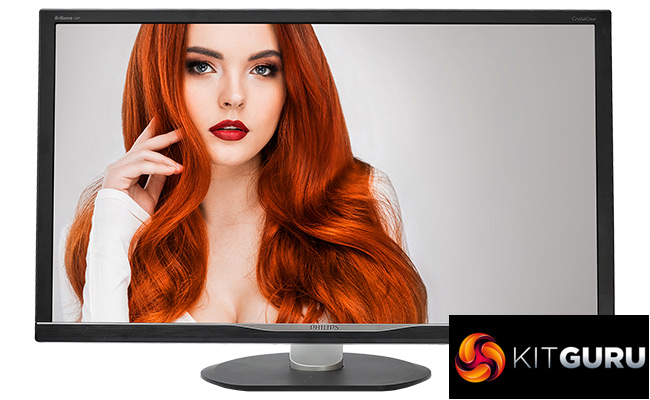
The USB Type C connection seems like the jack of all trades, with enough bandwidth available for a 4K screen, and enough power to drive a reasonably sized one too. But USB-C doesn't transfer enough power for a large screen, so the connection hasn't found favour with desktop monitors. Nevertheless, there are potential benefits of USB-C even here. The Philips Brilliance 328P6AUBREB is our first look at USB-C in a hefty desktop guise.
The 328P6AUBREB is a 31.5in screen, and unlike the smaller 272P7VPTKEB, only offers QHD resolution (2,560 x 1,440) rather than 4K, which is a bit of a surprise in a screen this big. However, this is still a premium IPS panel, and a bright one at that. It is rated to have 450cd/m2 of brightness and a decent 1,200:1 contrast, both of which are good for IPS.
Elsewhere, the usual characteristics of IPS are evident. The pixel response is 4ms, although this is also good for IPS, and vertical scanning maxes out at 76Hz, so this is no fast-refresh screen for first person shooters. Also, unsurprisingly, no adaptive sync technology is available, whether in AMD-friendly FreeSync or NVIDIA-friendly G-Sync form.
The star of the show, of course, is the USB Type C connection. We have seen a monitor using this in the past, the ASUS ZenScreen MB16AC. But the USB-C in the latter case was enabling a portable display that didn't need its own power supply, as both its power and its video signal could be supplied by the same cable. This isn't quite the same with the 328P6AUBREB, which requires 32.4W when operational, but here the USB-C provides benefits the portable ASUS screen doesn't, of which more shortly.
Alongside the USB-C, you also get HDMI 2.0 and DisplayPort 1.2, plus VGA for legacy analog connections. The one port missing is DVI, although its omission will be increasingly unimportant as this connection type disappeared from graphics cards a few generations ago. There are also a couple of USB 3.0 downstream ports, both with fast charging.
The cool thing here is that one USB-C connection can drive these and the display signal, so one cable can serve USB-connected keyboard and mouse as well as video, which is potentially really handy if you're plugging in a notebook. The 328P6AUBREB also has built-in 3W speakers plus analog minijack audio input with headphone minijack output. Since the USB-C display signal also carries audio, this one cable can provide desktop sound too. The final connection is RJ45, the function of which Philips doesn't make clear.
This screen boasts HDR support and 100 per cent sRGB alongside 99 per cent Adobe RGB, thanks to 10-bit colour processing. It's also not hideously expensive at under £400. With the USB-C functionality, this could be a very convenient option if you travel with a laptop but want a large-screen experience at your office desk with the convenenience of a single cable connection. Let's find out if the 328P6AUBREB delivers on this promise.
Specification:
Screen size: 31.5-inch, 16:9 aspect
Native resolution: 2,560 x 1,440
Refresh rate: 60Hz
Panel type: IPS
Contrast ratio: 1,200:1 (typical)
Brightness: 450cd/m2
Response time: 4ms Grey-to-Grey
Display inputs: HDMI 2.0, DisplayPort 1.2, VGA, USB-C
USB hub: Yes, 2 x USB 3.0 (with Fast Charge)
Tilt: Yes
Raise: Yes
Swivel: Yes
Other: Audio output, audio input, 3W stereo speakers
Retail Price: £391.38 (inc. VAT)
 KitGuru KitGuru.net – Tech News | Hardware News | Hardware Reviews | IOS | Mobile | Gaming | Graphics Cards
KitGuru KitGuru.net – Tech News | Hardware News | Hardware Reviews | IOS | Mobile | Gaming | Graphics Cards



